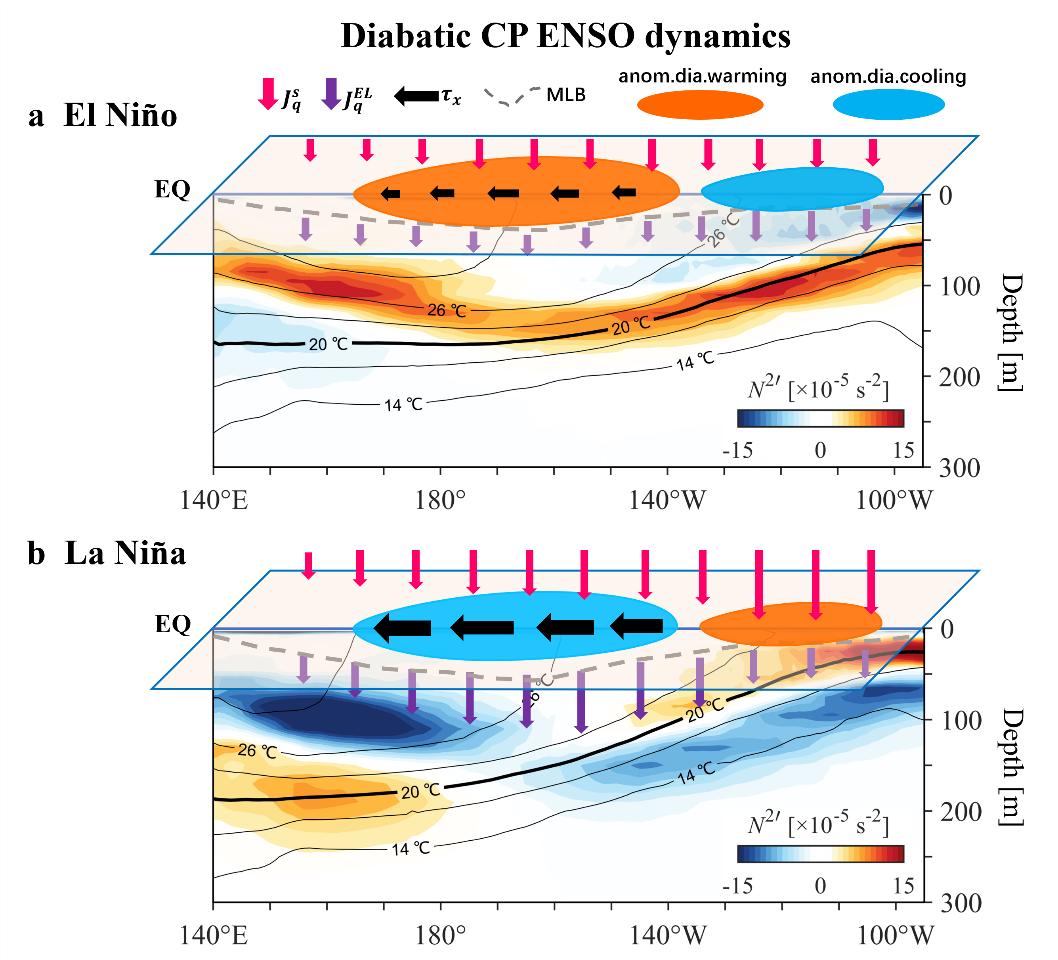Ocean Mixing Intensifies Central Pacific ENSO via Diabatic Heating, Study Reveals
The El Niño and Southern Oscillation (ENSO) is one of the most significant interannual variations in the global ocean-atmospheric system, which can strongly influence the climate of the Asia-Pacific region. It is therefore crucial to predict the happening of this phenomenon at a high confidence level.
However, in the 21st century, the prediction skill has waned, which is associated with more signals happening in the central Pacific, rather in the eastern Pacific as it did before this century. The former type is usually called CP ENSO while the latter is called EP ENSO.
To understand this question, the research team led by Prof. WANG Fan from the Institute of Oceanology of the Chinese Academy of Sciences (IOCAS) and their collaborators tried to study from a new perspective - the subsurface ocean mixing's effect on ENSO.
The study was published in Nature Communications on March 8.
The researchers successfully invented an estimation method, which utilizes wide-coverage, long-term Argo profile data, and for the first time produced abundant of mixing data (>4,0000) in the equatorial Pacific region. They revealed the important effect of ocean subsurface mixing and turbulent heat flux on the growth of both El Niño and La Niña of the CP type.
It is found that the divergence of the inward surface heat flux into the mixed layer and the outward turbulent heat flux out of the mixed layer leads to obvious diabatic warming/cooling effect. Consequently, the researchers found significant positive feedback of the diabatic effect on the sea surface temperature in the CP region. Contrarily, the diabatic effect significantly represses the temperature change in the EP region. Overall, the zonally incoherent diabatic effect helps with the formation of CP ENSO but tends to repress the EP ENSO on its eastern part.
It is a positive feedback loop, the CP ENSO associated wind and ocean state lead to variations in occurrence rate and strength of ocean subsurface mixing, in turn, the later enhances the growth of CP ENSO, with an efficiency larger than other mechanisms. "This loop does not stop until other negative feedback mechanisms become stronger than the positive feedbacks," said Dr. LIU Chuanyu, the first author of the study.
This study provides a new perspective to understand the ENSO dynamics, because it is a diabatic mechanism, while the previous proposed mechanisms, of either positive or negative feedback, are all adiabatic essentially.
"It is hopefully this mechanism is well represented in the prediction models of ENSO, so that to improve prediction skills," said Prof. WANG, one of the corresponding authors.

Photographic image of the proposed diabatic CP ENSO positive feedback. (Image by IOCAS)